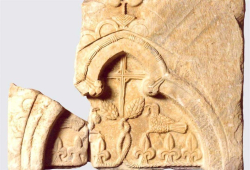Byzantine & Christian Museum of Athens

Byzantine & Christian Museum of Athens
It contains remarkable collections of Byzantine art, architecture, and culture, with more than 30,000 artifacts that include icons, sculptures, textiles, frescoes, ceramics, manuscripts, and mosaics. In June 2004, it reopened to the public after renovations and the addition of a new wing in time for its 90th Anniversary and the 2004 Athens Olympics.
The Byzantine and Christian Museum is located on Vasilissis Sofias Avenue on the grounds of the former Villa Ilissia, which was the winter residence of the Duchess of Plaisance on the banks of the now underground Ilissos River, until her death in 1854. Afterward, it passed into the possession of the Greek State. The remarkable building complex, which combines the architectural elements of Classicism and Romanticism, was erected by Stamatios Kleanthis in 1848 and was transformed into a museum by architect Aristotle Zachos.
It is surrounded by beautiful gardens which host 3 small themed exhibitions of historic and archaeological interest and 3 tombs that date back to the 4th-6th Century A.D. In the garden area there is also a water fountain, a mini-amphitheater, a seating area under the trees, a gift shop and, a café - restaurant.
The museum is in close proximity with the Lyceum of Aristotles and the War Museum of Greece. The permanent exhibition area is accessible to people with disabilities by using the elevators positioned throughout the premises, while there is level access at the main entrance and designated parking space for disabled persons.








